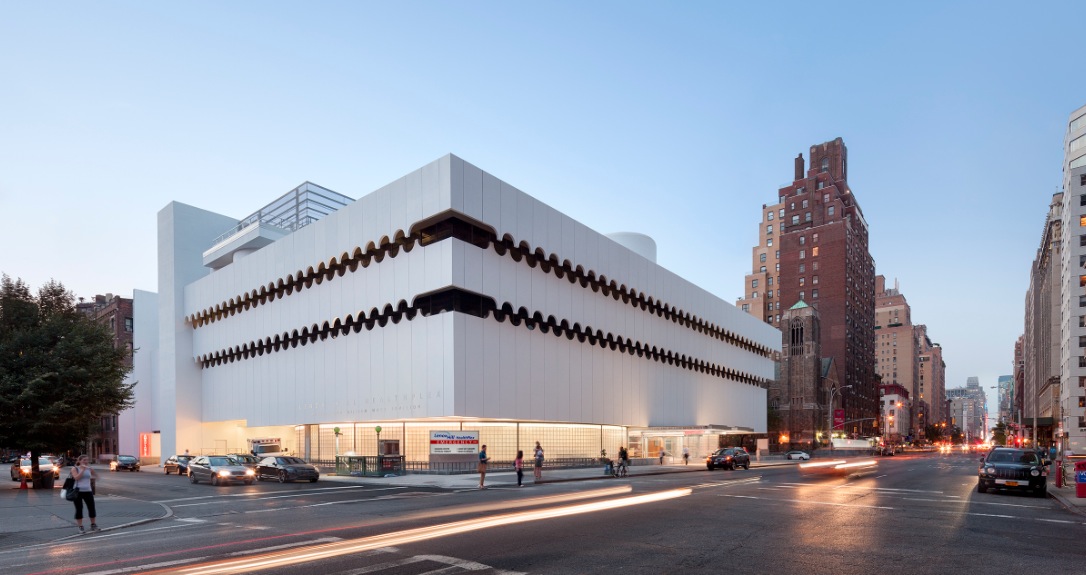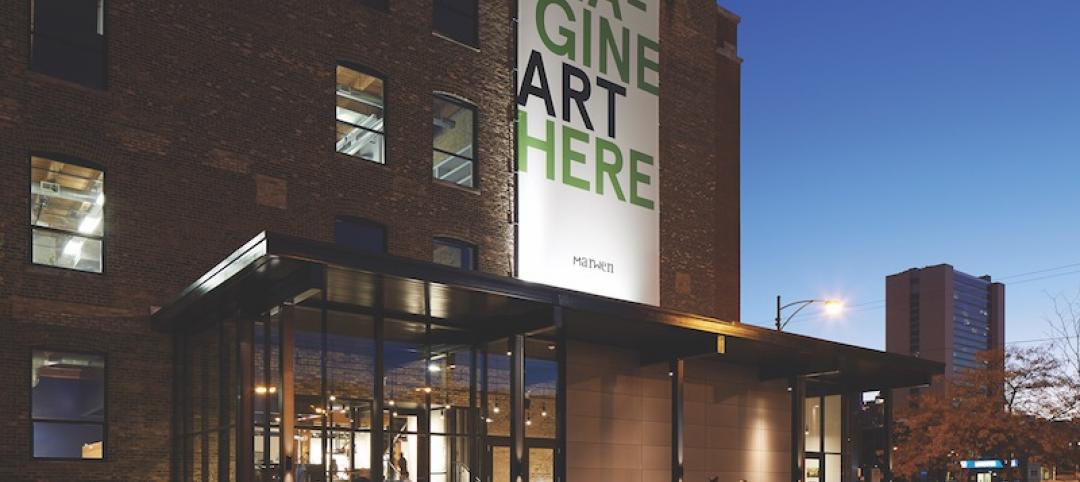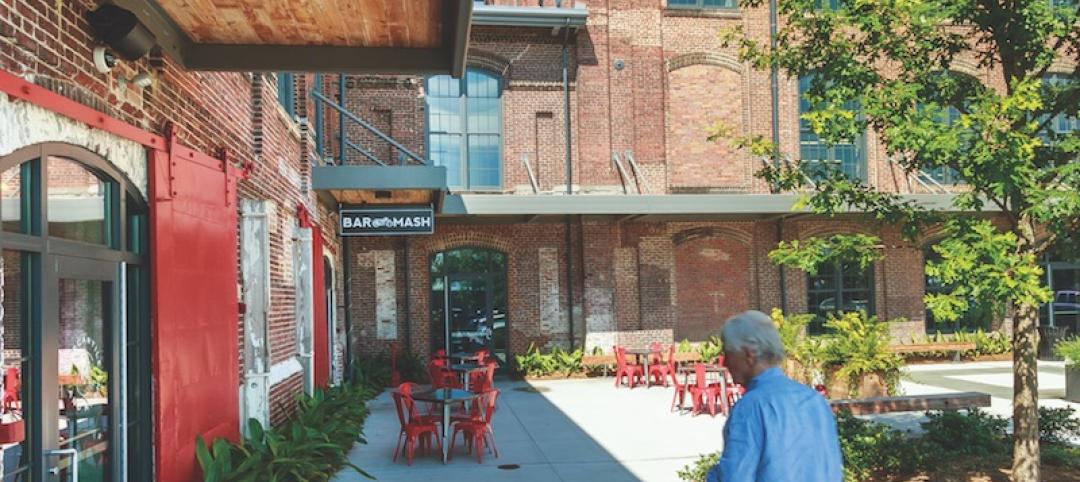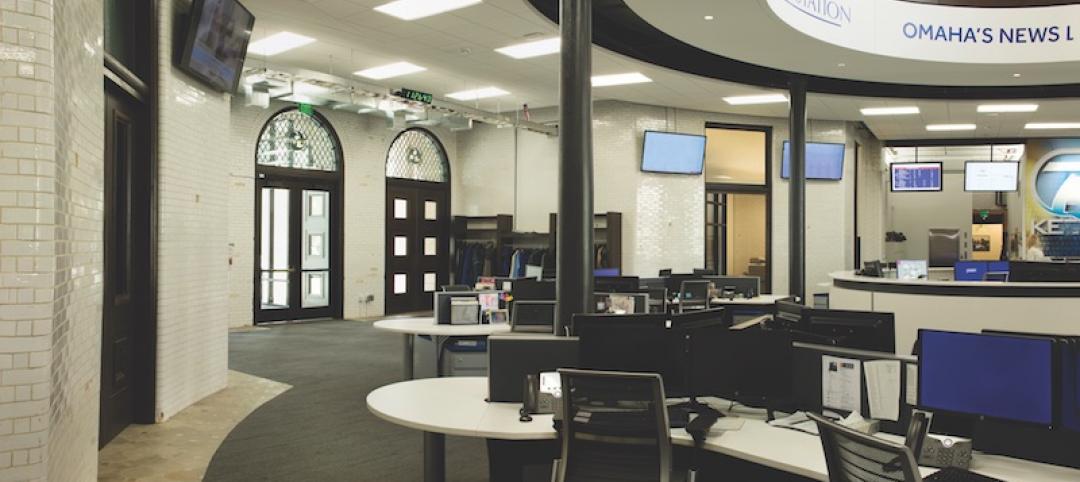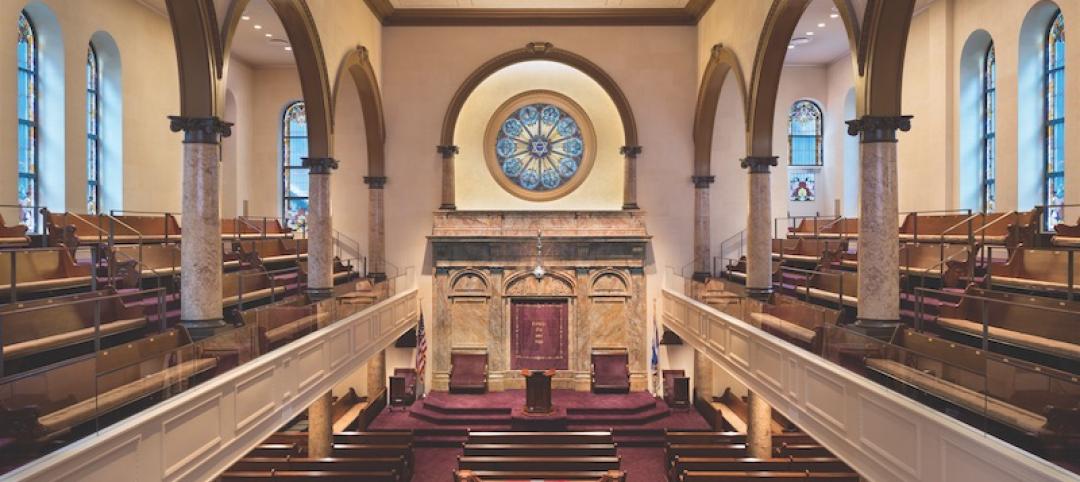Manhattan’s first freestanding emergency department, the Lenox Hill Healthplex in Greenwich Village is the result of a sensitive restoration and adaptive reuse of the once-endangered Curran O’Toole Building, a maritime-inspired structure designed in the early 1960s by Frank Lloyd Wright protégé Albert C. Ledner.
BRONZE AWARD
Building Team: Perkins Eastman (submitting firm, architect); North Shore–LIJ (owner); JLL (owner’s representative); Robert Silman Associates (SE, façade consultant); Bard, Rao + Athanas Consulting Engineers (MEP); Turner Construction Company (contractor)
General Information: Size: 160,000 sf. Completion: July 2014. Delivery method: design assist
The building’s interior was stripped down to the bones, while the exterior was carefully preserved and updated. Its newly restored circular glass-block walls flood the ground-floor ED with natural light—an unusual feature in ED design—and the removal of portions of a previously-added second floor created an uplifting double-height space.
The tight urban site and outdated structure posed a number of thorny issues for the team, such as: accommodating emergency vehicle drop-off (solution: carve out a portion of the ground floor to make way for an ambulance bay without disturbing the façade); adding surgical functions (solution: reinforce the existing structure to meet vibration standards on the surgical floor and roof, and cut new shafts for ventilation); maintaining security (solution: minimize entrance points, maximize sight lines, lighting, and cameras); and delivery/storage of medical supplies and food (solution: transform the below-grade garage into space for support services).
The upper floors, currently under construction, will feature medical offices, walk-in imaging services, ambulatory surgery, orthopedics, physical medicine and rehabilitation, and health and wellness services.
Related Stories
Reconstruction Awards | Nov 16, 2016
Reconstruction Awards: Bay Area Metro Center
The structure’s 60,000-sf floor plates made the interior dark and foreboding, and BAHA wanted to improve working conditions for its employees and tenants.
Reconstruction Awards | Nov 16, 2016
Reconstruction Awards: Marilyn I. Walker School of Fine and Performing Arts, Brock University
The five-story brick-and-beam structure is an adaptive reuse of the Canada Hair Cloth Building, where coat linings and parachute silks were once made.
Reconstruction Awards | Nov 16, 2016
Reconstruction Awards: Marwen
Marwen currently offers 100 studio courses to 850 underserved students from 295 schools and 53 zip codes.
Reconstruction Awards | Nov 16, 2016
Reconstruction Awards: The Cigar Factory
The Cigar Factory was originally a cotton mill but became the home of the American Cigar Company in 1912.
Reconstruction Awards | Nov 16, 2016
Reconstruction Awards: St. Patrick's Cathedral
The cathedral, dedicated in 1879, sorely needed work.
Reconstruction Awards | Nov 15, 2016
Reconstruction Awards: Lovejoy Wharf
After demolishing the rotten wood wharf, Suffolk Construction (GC) built a new 30,000-sf landscaped quay, now known as Lovejoy Wharf.
Reconstruction Awards | Nov 15, 2016
Reconstruction Awards: KETV-7 Burlington Station
The 1898 Greek Revival train terminal, which was listed on the National Register of Historic Places in 1974, had been abandoned for nearly four decades.
Reconstruction Awards | Nov 14, 2016
Reconstruction Awards: The Gallery at the Three Arts Club
On the exterior of the building, masonry and terra cotta were revitalized, and ugly fire escapes on the south façade were removed.
Reconstruction Awards | Nov 14, 2016
Big-box store rescaled to serve as a preventive-care clinic
The hospital was attracted to the big box’s footprint: one level with wide spans between structural columns, which would facilitate a floor plan with open, flexible workspaces and modules that could incorporate labs, X-ray, ultrasound, pharmacy, and rehab therapy functions.
Reconstruction Awards | Nov 14, 2016
Fire-charred synagogue rises to renewed glory
The blaze left the 110-year-old synagogue a charred shell, its structural integrity severely compromised.


